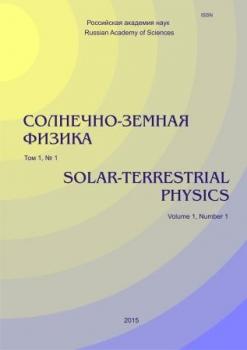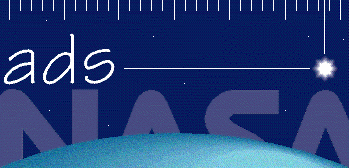Yakutsk, Russian Federation
The dependences of the geomagnetic indices SYM-H and ASY-H on interplanetary parameters for the period from 1981 to 2015 according to their daily averages are studied. The study is carried out in two ways: the first — the entire data array is analyzed, the second — the data are divided into 9 activity groups in accordance with the average daily values of the planetary geomagnetic index Ap. A correlation analysis of the indices with the solar wind speed, magnitude, and the north-south component of the interplanetary magnetic field (IMF) has been performed. The search for a relationship between the ASY-H and SYM-H indices and interplanetary parameters turned out to be more successful when considering the entire data array than in the case of splitting the data into groups of magnetic activity. Regression equations relating ASY-H and SYM-H to interplanetary parameters are determined. It has been found that when describing the relationship between the ASY-H and SYM-H indices and the IMF north-south component, it is necessary to take into account the contribution of the IMF modulus.
geomagnetic indices SYM-H and ASY-H, geomagnetic activity, magnetospheric ring current, interplanetary parameters, space weather
1. Akasofu S.-I. Interplanetary energy flux associated with magnetospheric substroms. Planet. Space Sci. 1979, vol. 27, iss. 4, pp. 425-431. DOI:https://doi.org/10.1016/0032-0633(79)90119-3.
2. Alexeev I.I., Belenkaya E.S., Kalegaev V.V., Feldstein Y.I., Grafe A. Magnetic storms and magnetotail currents. J. Geophys. Res. 1996, vol. 101, iss. A4, pp. 7737-7747. DOI:https://doi.org/10.1029/95JA03509.
3. Ballif J.R., Jones D.E., Coleman P.J. Further evidence on the correlation between transverse fluctuations in the interplanetary magnetic field and Kp. J. Geophys. Res. 1969, vol. 74, iss. 9, pp. 2289-2301. DOI:https://doi.org/10.1029/JA074i009p02289.
4. Burton R.K., McPherron R.L., Russell C.T. An empirical relationship between interplanetary conditions and Dst. J. Geophys. Res. 1975, vol. 80, iss. 31, pp. 4204-4214. DOI:https://doi.org/10.1029/ja080i031p04204.
5. Dubyagin S., Ganushkina N., Kubyshkina M., Liemohn M. Contribution from different current systems to SYM and ASY midlatitude indices. J. Geophys. Res. 2014, vol. 119, pp. 7243-7263. DOI:https://doi.org/10.1002/2014JA020122.
6. Echer E., Tsurutani B.T., Gonzalez W.D. Interplanetary origins of moderate (-100 nT < Dst ≤ -50 nT) geomagnetic storms during solar cycle 23 (1996-2008). J. Geophys. Res. 2013, vol. 118, iss. 1, pp. 385-392. DOI:https://doi.org/10.1029/2012JA018086.
7. Friis-Christensen E., Lassen K., Wilhjelm J., Wilcox J.M., Gonzalez W., Colburn D.S. Critical component of the interplanetary magnetic field responsible for large geomagnetic effects in the polar cap. J. Geophys. Res. 1972, vol. 77, iss 19, pp. 3371-3376. DOI:https://doi.org/10.1029/JA077i019p03371.
8. Holser R.E., Slavin J.A. An evaluation of three predictors of geomagnetic activity. J. Geophys. Res. 1982, vol. 87, iss. A4, pp. 2558-2562. DOI:https://doi.org/10.1029/JA087iA04p02558.
9. Iyemori T., Araki T., Kamei T., Takeda M. Mid-latitude geomagnetic indices ASY and SYM (Provisional) No. 1 (1989-1990). Data Analysis Center for Geomagnetism and Space Magnetism; Kyoto University, Kyoto, 1992, 110 p.
10. Liemohn M.W., McCollough J.P., Jordanova V.K., Ngwira C.M., Morley S.K., Cid C., et al. Model evaluation guidelines for geomagnetic index predictions. Space Weather. 2018, vol. 16, pp. 2079-2102. DOI:https://doi.org/10.1029/2018SW002067.
11. Lockwood M., McWilliams K.A. On optimum solar wind magnetosphere coupling functions for transpolar voltage and planetary geomagnetic activity. J. Geophys. Res. 2021, vol. 126, e2021JA029946. DOI:https://doi.org/10.1029/2021JA029946.
12. Makarov G.A. Offset in the geomagnetic indices of the magnetospheric ring current. Solar-Terr. Phys. 2021, vol. 7, iss. 3, pp. 29-35. DOI:https://doi.org/10.12737/stp-73202103.
13. Maltsev Y.P., Arykov A.A., Belova E.G., Gvozdevsky B.B., Safargaleev V.V. Magnetic flux redistribution in the storm time magnetosphere. J. Geophys. Res. 1996, vol. 101, no. A4, pp. 7697-7704. DOI:https://doi.org/10.1029/95JA03709.
14. Meng X., Tsurutani B.T., Mannucci A.J. The solar and interplanetary causes of superstorms (minimum Dst≤−250 nT) during the space age. J. Geophys. Res. 2019, vol. 124, iss. 6, pp. 3926-3948. DOI:https://doi.org/10.1029/2018JA026425.
15. Murayama T., Aoki T., Nakai H., Hakamada K. Empirical formula to relate the auroral electrojet intensity with interplanetary parameters. Planet. Space Sci. 1980, vol. 28, iss. 8, pp. 803-813. DOI:https://doi.org/10.1016/0032-0633(80)90078-1.
16. Newell P.T., Sotirelis T., Liou K., Meng C.-I., Rich F.J. A nearly universal solar wind-magnetosphere coupling function inferred from 10 magnetospheric state variables. J. Geophys. Res. 2007, vol. 112, A01206. DOI:https://doi.org/10.1029/2006JA012015.
17. Rostoker G., Falthammer C.-G. Relationship between changes in the interplanetary magnetic field and variations in the magnetic field at the Earth’s surface. J. Geophys. Res. 1967, vol. 72, iss. 23, pp. 5853-5863. DOI:https://doi.org/10.1029/JZ072i023p05853.
18. Snyder C.W., Neugebauer M., Rao N.R. The solar wind velocity and its correlation with cosmic ray variations and with solar and geomagnetic activity. J. Geophys. Res. 1963, vol. 68, iss. 24, pp. 6361-6370. DOI: 10.1029/ JZ068i024p06361.
19. Tsyganenko N.A., Sitnov M.I. Modeling the dynamics of the inner magnetosphere during strong geomagnetic storms. J. Geophys. Res. 2005, vol. 110, A03208. DOI:https://doi.org/10.1029/2004 JA010798.
20. Vaisberg O.L., Smirnov V.N., Zastenker G.N., Savin S.P., Verigin M.I. Plazmennaya geliogeofizika. T. 1: Vzaimodeistvie solnechnogo vetra s vneshnei magnitosferoi Zemli [Plasma Geliogeophysics. Ed. L.M. Zeleny, I.S. Veselovsky. Vol. 1: Interaction of the solar wind with the outer magnetosphere of the Earth]. Moscow, FIZMATLIT Publ., 2008. P. 378-422. (In Russian).
21. Weygand J.M., McPherron R.L. Dependence of ring current asymmetry on storm phase. J. Geophys. Res. 2006, vol. 111, A11221. DOI:https://doi.org/10.1029/2006JA011808.
22. Wilcox J.M., Schatten K.H., Ness N.F. Influence of interplanetary magnetic field and plasma on geomagnetic activity during quiet-sun condition. J. Geophys. Res. 1967, vol. 72, iss. 1, pp. 19-26. DOI:https://doi.org/10.1029/JZ072i001p00019.
23. Yermolaev Yu.I., Lodkina I.G., Nikolaeva N.S., Yermolaev M.Yu. Statistical study of interplanetary condition effect on geomagnetic storms. Cosmic Research. 2010, vol. 48, iss. 6, pp. 485-500. DOI:https://doi.org/10.1134/S0010952510060018.
24. Yermolaev Yu.I., Lodkina I.G., Nikolaeva N.S., Yermolaev M.Yu., Riazantseva M.O., Rakhmanova L.S. Statistic study of the geoeffectiveness of compression regions CIRs and Sheaths. J. Atmos. Solar-Terr. Phys. 2018, vol. 180, pp. 52-59. DOI:https://doi.org/10.1016/j.jastp.2018.01.027.
25. URL: http://wdc.kugi.kyoto-u.ac.jp/aeasy/asy.pdf (accessed March 29, 2022).
26. URL: http://omniweb.gsfc.nasa.gov (accessed March 29, 2022).
27. URL: https://wdc.kugi.kyoto-u.ac.jp/index.html (accessed March 29, 2022).


















